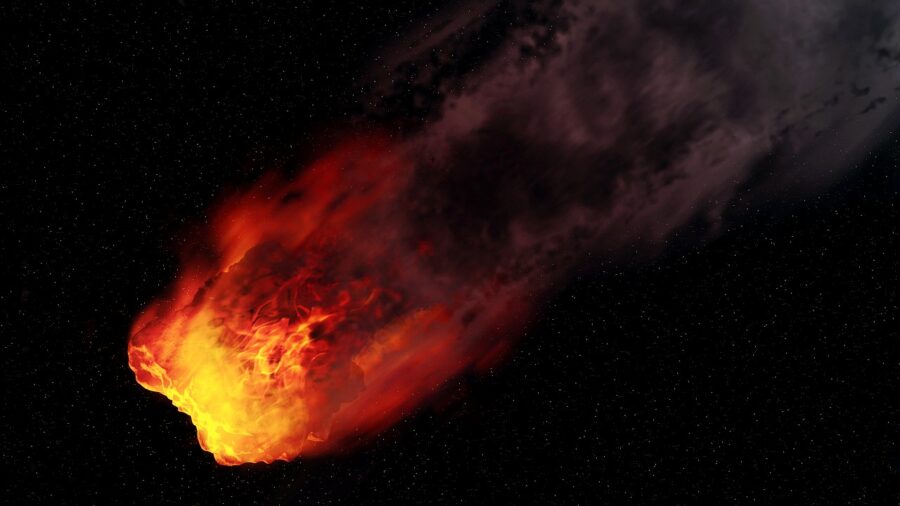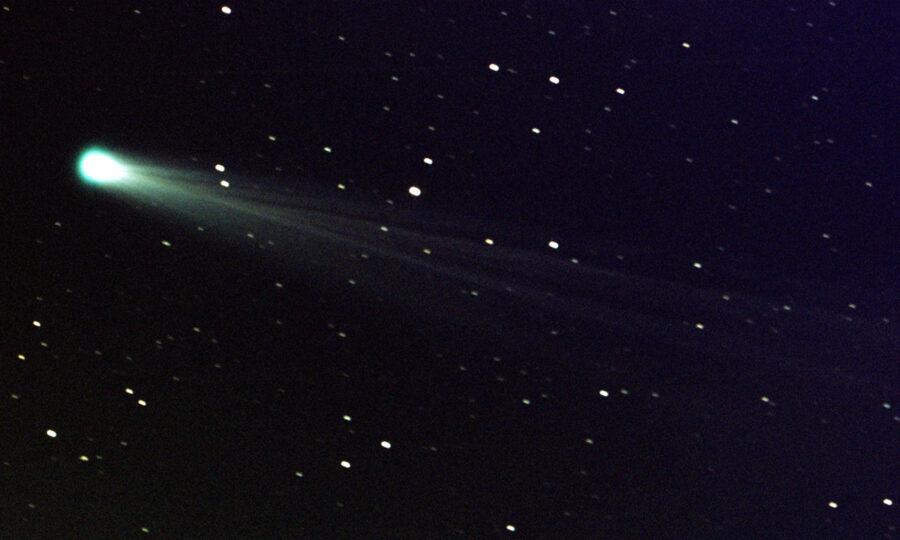City-Sized Horned Comet Racing Toward Earth

As if things didn’t seem apocalyptic enough already, considering the geo-political situation around the world, paired with the advent of AI in nearly all fields—including military—Live Science now reports a “horned” comet three times bigger than Mount Everest, hurling towards our pale blue dot.
An exploding comet with the appearance of horns is blasting through space on a trajectory to pass by Earth this spring.
According to the report, the enormous volcanic comet the size of a small city has violently exploded for the second time in four months, and just like the previous eruption, the explosion emitted a cloud of gas and ice that looked like a gigantic pair of horns.
The comet in question, named 12P/Pons-Brooks, is a cryovolcanic comet, which basically means that it’s a cold volcano. This one has a solid nucleus with an estimated diameter of 18.6 miles, filled with cryomagma, a mixture of dust, ice, and gas.
The explosions happen due to solar radiation, which has a thermal effect on the cryo-magma. As the radiation heats the comet’s inside, the pressure builds up, causing the comet to explode violently, shooting its frosty insides out into space through large fissures in its shell.
Over days, the comet’s gas cloud expanded further and developed its “horns,” causing jokes among astronomers that it actually looked like a spaceship from science fiction…
The latest outburst was detected on October 5, after the comet became dozens of times brighter due to light reflecting from the gas cloud that surrounds it—which was expanded due to the aforementioned release of gas from the comet’s interior.

Over days, the comet’s gas cloud expanded further and developed its “horns,” causing jokes among astronomers that it actually looked like a spaceship from science fiction—the number of alien invaders that have approached Earth under the guise of celestial bodies is astounding, so there’s that. However, it’s highly possible that 12P/Pons-Brooks owes its horns to its irregularly shaped nucleus that quite possibly obstructs the outflowing gas—which actually becomes more noticeable as the gas escapes.
The horned comet is currently traveling the cold vastness of space towards our inner solar system, where it will be slung around the sun on its highly-elliptical orbit around the sun. The comet will reach its closest point to Earth on April 21 next year, and it may even become visible to the naked eye before reaching the sun for a speed boost and a sling-shot towards the outer solar system—after which we won’t see it again until 2095.
As the radiation heats the comet’s inside, the pressure builds up, causing the comet to explode violently, shooting its frosty insides out into space through large fissures in its shell.
It’s also worth noting that this isn’t the first time this particular comet grew horns. Another explosion took place on July 20, when the comet blew its top for the first time in nearly 70 years, expanding its gas cloud to 143,000 miles, which is around 7,000 times wider than its nucleus.
It’s still unclear just how much the gas cloud grew during the most gas eruption, which was actually twice as intense as the previous one. However, the gas cloud surrounding the comet most likely shrunk back to near its normal size by now.
With that said, we’re likely to witness several more major eruptions of gas coming from the comet’s interior, and it’s entirely possible that those will be even more intense as the comet becomes more exposed to solar radiation coming from our sun.












